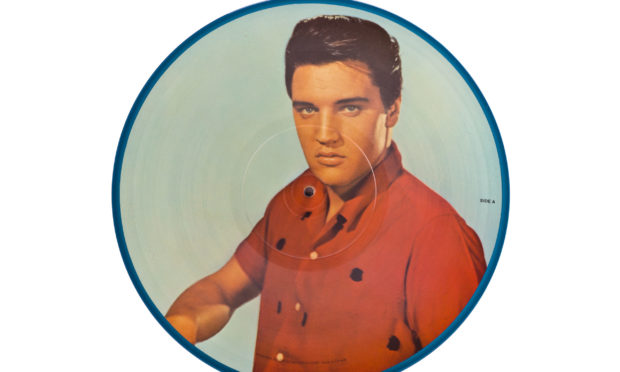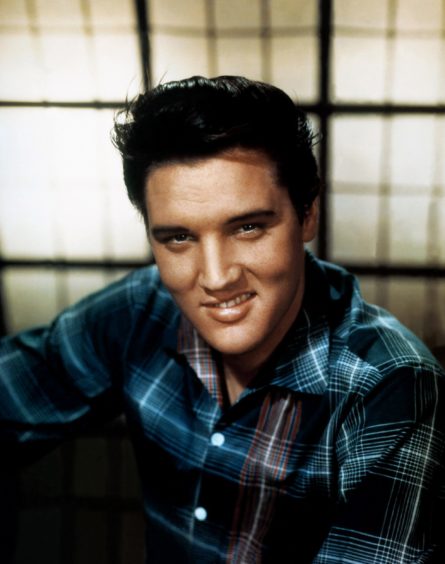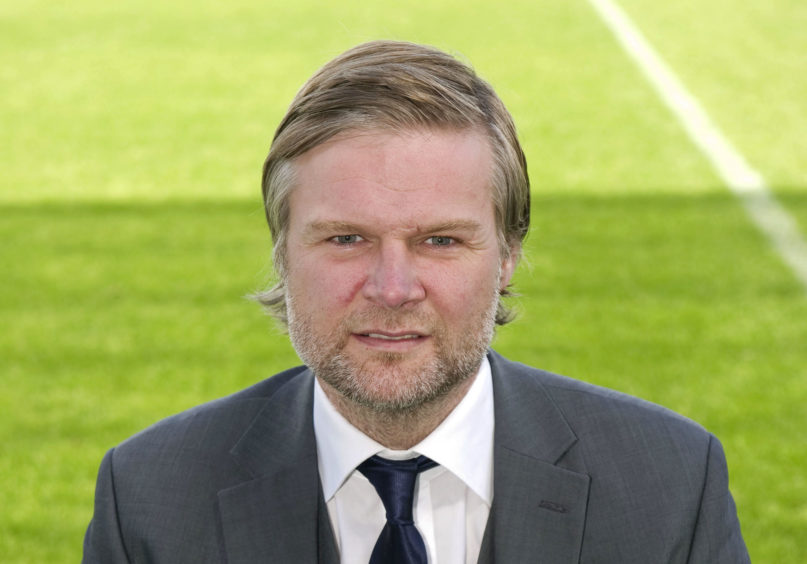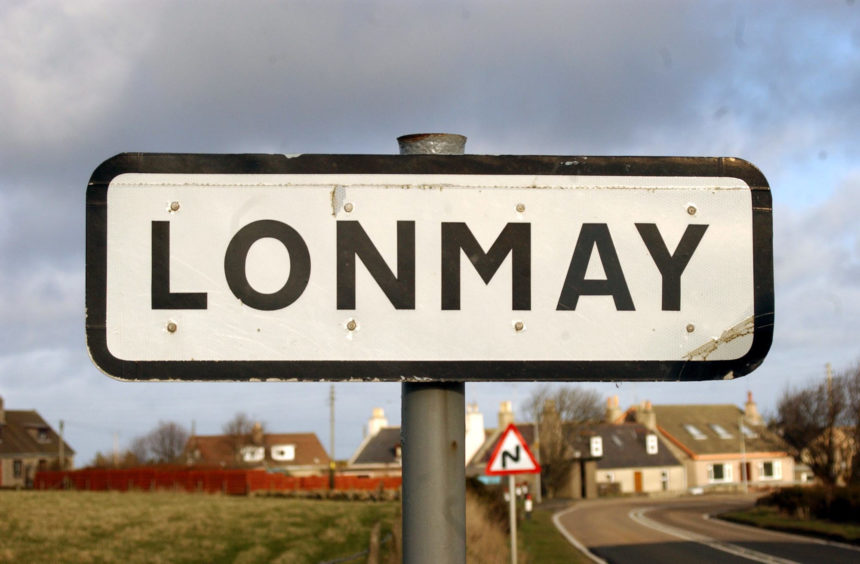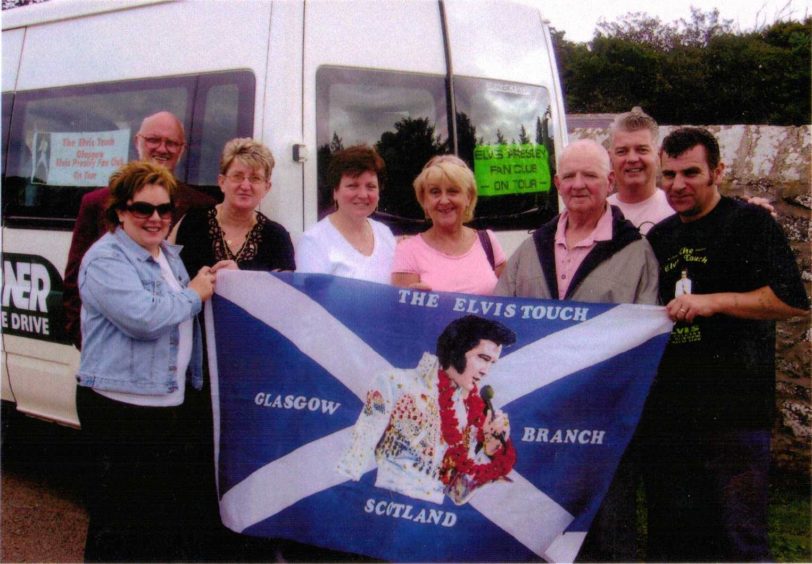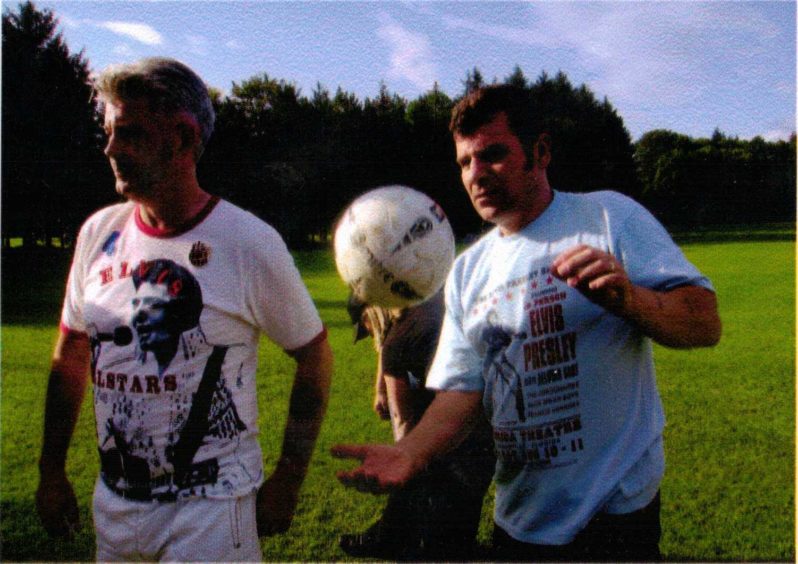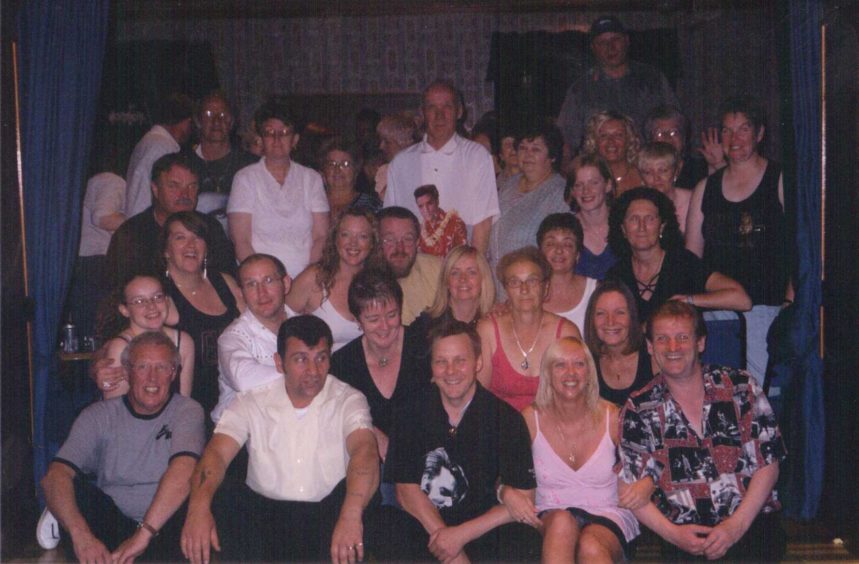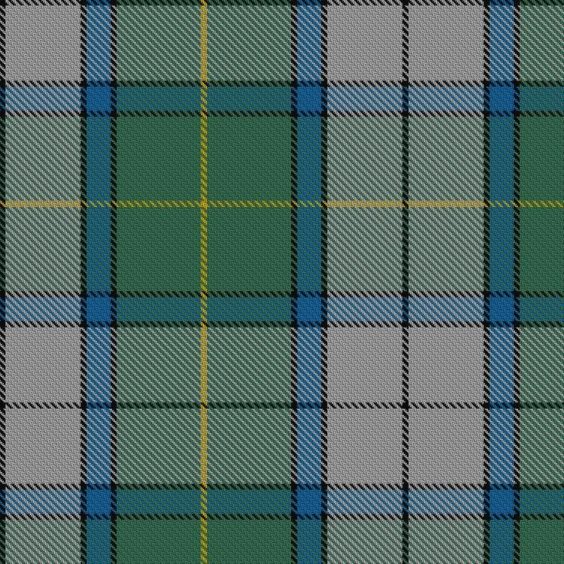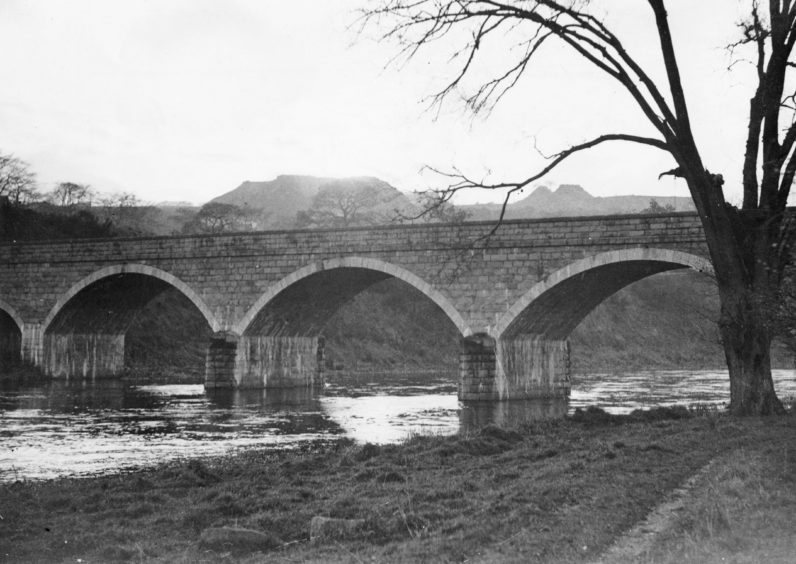Elvis Presley has Scottish roots which can be traced back to the tiny hamlet of Lonmay near Fraserburgh. Gayle Ritchie takes up the story.
The unassuming Aberdeenshire village of Lonmay is a very long way from Graceland.
But this village, which is part of the Lonmay parish, it is generally agreed, is where the ancestors of Elvis Presley – the king of rock’n’roll – have their roots.
The small cluster of houses, six miles from Fraserburgh, was the focus of a flurry of publicity 16 years ago when it was firmly established that the Pressleys of Lonmay were linked to the Presleys of Tupelo.
The singer’s family had always claimed to have Scottish roots, and Peter Haining’s 1987 book Elvis In Private contained a fairly detailed family tree, which supported the fact.
But it was Scots author Allan Morrison who stirred up great excitement in 2004 with the revelation that he had traced the King’s ancestral roots back to the tiny village in the north-east where, he says, Elvis’s great-great-great-great-great-great-grandfather lived in the 1700s.
The offspring of his marriage, Andrew Presley, emigrated to North Carolina in 1745 and started the American branch of the family.
“I was able to trace his family tree – and when it got back to Lonmay it was like striking gold,” said Allan, from Greenock.
According to the parish register, records showed that Andrew Presley’s father, also Andrew, married Elspeth Leg in Lonmay on August 27 1713.
The Presleys would have been married at the village’s old parish church, built in 1607 but now a ruin.
It lies just outside the estate of Cairness, a former seat of the Gordons with a fine mansion house.
Nine of their children were recorded in the register, but there was a 10th son, Andrew, born about 1720, who made his living as a blacksmith and left Lonmay for Anson County, North Carolina, in 1745.
Rags to riches
The Presleys’ story is a classic tale of emigration – from rags to riches within six generations.
In America, Andrew had a son, also called Andrew, born around 1765, and his lineage can be traced forward 200 years to a shack in Tupelo, Mississippi, where Elvis Aaron Presley was born to Vernon and Gladys Presley on January 8 1935.
Elvis was born the second of identical twins although tragically his brother was stillborn.
The young Elvis grew up as an only child and closely bonded with his mother with whom he lived, just above the poverty line, in Tupelo and later Memphis.
Previously, it had been claimed that Elvis’s people hailed from Paisley, but this was never substantiated.
Ireland, Wales and Germany all had claims on him before Allan settled the dispute.
He discovered that most of the Presleys living in Scotland during the 18th and 19th centuries could be found in Aberdeenshire.
They were based in Lonmay and the nearby villages of New Deer, Old Deer and Tarves.
His book, The Presley Prophecy, published in 2007, covers the adventures of Andrew Presley during the Jacobite rebellion.
Elvis is a distant cousin: football legend Steven Pressley
Former Scotland international and Dundee United defender Steven Pressley was left All Shook Up when he discovered he was related to Elvis.
The footballer, nicknamed Elvis because of his surname, played for Hearts when he made the musical connection in 2006 through a chance discovery by his granddad, family tree enthusiast Jack.
Jack first became aware of the American side of the family when a fellow Pressley – or Presley – genealogist tracked him down to his home in Fraserburgh and brought his family tree over.
They discovered that their family trees overlapped and that Steven and Elvis, who died in 1977, would have been cousins.
Jack said at the time: “I retired in the 1980s and got into genealogy when I had some more time on my hands.
“But I never bothered with Elvis. Because his name was spelled differently, I assumed it was another branch of the family.
“It was just recently I realised that, by working back, I could see where Elvis’s family tree came back and ended up in Scotland – and at our family.”
Place of pilgrimage?
The hamlet of Lonmay boasts neither a shop nor a school and there’s nothing to advertise the king of rock ‘n’ roll’s connections to the area.
Back in 2004, the village’s Ban-Car Hotel vowed to decorate the lounge in a newly created Presley of Lonmay tartan in recognition of the Elvis connection, but this plan never came to fruition.
However, Tina and David Gibbins, who have run the hotel for more than 20 years, did display a kilt bearing the fancy tartan in their function hall.
“This is always a good talking point,” said Tina. “We’ve had several Americans and Elvis fans from all over the UK who come to visit. They like to see the kilt and hear the story behind the king of rock ‘n’ roll and his ancestry.”
Back in 2004, Lonmay residents called on tourism and council bosses to help them establish the village on the musical map.
There was talk of Elvis-themed signposts being installed, guiding visitors to places like the nearby church where Presley and Leg wed.
But nothing materialised. Three years later, in 2007, David revealed he had asked the tourist board about the signs and was told if he wanted them, he would have to put them up himself. As yet, he has not.
On occasion, drivers pull over on the busy A90 to have their photo taken next to the Lonmay road sign, but that aside, there’s very little for an Elvis pilgrim to discover in the Buchan community.
Alas, you won’t find any Presley names engraved on headstones in the adjacent graveyard either; the original family would have been too poor too afford such luxuries.
“It used to be known widely in Fraserburgh that Elvis had ancestry in Lonmay,” said Fraserburgh councillor Charles Buchan.
“Since his death it has slid to the back of people’s memory. It certainly would be great for our tourism if Lonmay was part of a famous name local trail, perhaps including Elvis, Edvard Grieg, Thomas Blake Glover and Lord Glenbuchat, who all have links to the area.”
The Elvis Touch
The Elvis Touch is the Glasgow branch of The Elvis Presley Fan Club of Great Britain and is officially affiliated with Graceland and Elvis Presley Enterprises.
For the last 25 years, the fan club has staged an annual event in March marking Elvis’s one and only appearance in the UK – at Prestwick Airport.
The heartthrob was flying back to America after finishing his military service in Germany and touched down at the airport for 90 minutes while the plane refuelled.
Wearing his full military uniform, the 25-year-old posed for pictures, and hugged fans, who had been tipped off about the visit.
“It’s the only place in Great Britain that can claim to have Elvis arrive on its soil, albeit briefly,” said DJ and Elvis Touch Glasgow press officer Paul Downie.
Paul, who was born the month after Elvis landed in Scotland in March 1960, organises the Prestwick event, at which hundreds of fans come together to dance to the king’s music and reminisce.
The fan club has also made three trips to Lonmay to celebrate Elvis’s family roots.
“We’ve taken a coachload of members there a few times, after we had done some research on his family tree,” said Paul.
“We visited the site of the church where his ancestors were married, enjoyed local places of interest and had an Elvis dance at the Ban-Car Hotel with fans from the Glasgow, Aberdeen, Falkirk and Edinburgh branches of the Elvis Presley Fan Club.
“We even had an Elvis-themed sports day in the local park. We always have lots of fun.”
As well as running the annual celebration at Prestwick Airport, the club runs an Elvis-themed dance every two months at the Bacchus Bar in Glasgow.
During lockdown, they have been unable to hold these events so instead, Paul has been doing live Facebook broadcasts every Friday night, reaching out to Elvis fans across the globe.
Presley tartan
An official Presley tartan was designed in 2004 when Lonmay’s connections to Elvis came under the spotlight.
Mike King of Aberdeen-based kiltmaker Philip King produced the Presley Of Lonmay tartan to honour the king of rock ‘n’ roll’s north-east of Scotland roots.
It consists of four colours – blue, grey, green and yellow.
The kilt even came complete with a sporran engraved with thistles and a bald eagle – marking the Scottish and American link.
In 2004, at the time of the launch of the new tartan, Mike said: “Elvis’s favourite colours were black, baby blue, pink and gold, so I combined them all in the pattern.
“We used blue to represent the nearby town of Peterhead – the Blue Toon – as well as grey for the skies, green for countryside grass, and yellow for local cornfields.”
The black and blue background is accentuated by a light blue over-pattern and a tiny pink stripe with gold guttering.
What’s in a name?
As to the origins of the surname Presley, there are two, according to The New Dictionary of American Family Names (1973) by Elsdon C. Smith. In England it is a variant of Priestley – “dweller by the priest’s wood or clearing”.
In Scotland, Smith said intriguingly that it was “from the names of places in Aberdeen”.
The Place Names of Aberdeenshire, by William M. Alexander (1952), stated the obvious – that Persley is a tiny hamlet by the River Don, on the northern outskirts of Aberdeen.
Formerly an isolated scattering of cottages in the Old Machar parish, it’s been rapidly urbanised by the suburb of Danestone. The name is thought to derive from the Gaelic “preaslach” which means “wooded place”.
The north-east still has families called Preslie, Presslie, Pressley, Pressly and Presly, in addition to the more well-known spelling. Apparently, some of them already “knew” they were Elvis’s “cousins”.
